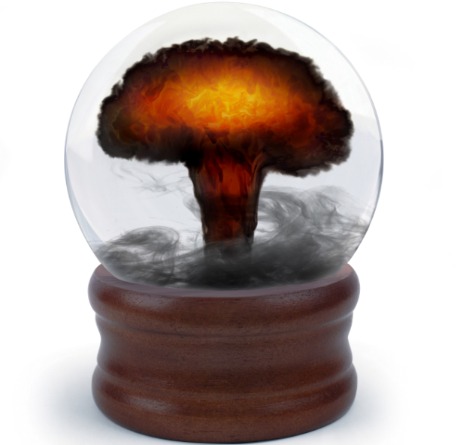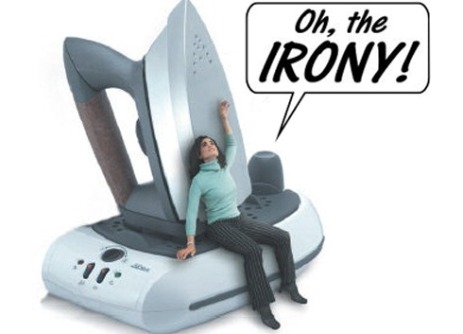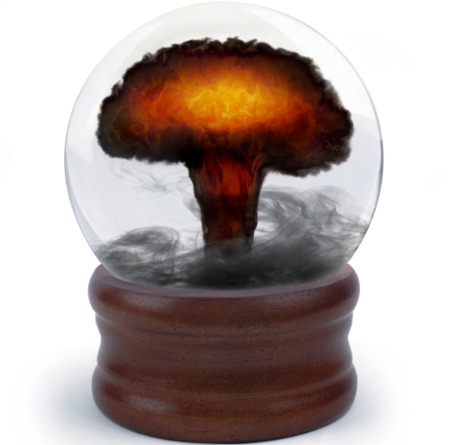 Let’s hope the future doesn’t hold this. This is adapted from a post at TomDispatch; you can read the longer version here.
Let’s hope the future doesn’t hold this. This is adapted from a post at TomDispatch; you can read the longer version here.
“Not as bad as Chernobyl”? It might be better to describe the situation at Japan’s Fukushima nuclear plant as “remarkably unlike Chernobyl” in rural Ukraine, where, almost 25 years ago, a single uncontained nuclear reactor with a graphite core blew.
We now contemplate the possibility of multiple reactors accompanied by multiple containment pools for what is euphemistically called “spent” fuel (when it isn’t “spent” at all) — at least 11,195 such rods, 1760 metric tons of them — self-destructing in a highly industrialized country smaller than California with the third largest economy on the planet. In a situation we’ve never faced before, to talk about “safety” and offer “reassurance” should ring oddly indeed.
Don’t misunderstand, I’m no scientist and have no scientific basis for assessing what’s going to happen in Japan, but after days reading the news copiously and watching endless TV reports, I do know a cultural taboo when I see one. In case you hadn’t noticed, while each morning’s screaming headlines contain terrible words — “dire,” “catastrophic,” “ever worsening,” “racing against the clock” — along with terrifying descriptions and ever-extending timelines for the crisis, few (not even, it seems, most anti-nuclear writers and groups) can bring themselves to speculate publicly about what might actually happen, no less ask the single scariest question: What’s the worst that might happen?
In mainstream news reports everywhere, you can feel the urge not to tumble into the irradiated zone of the nuclear imagination. And so one of the strangest aspects of the massive coverage of the Fukushima catastrophe — wrapped as it is inside an earthquake/tsunami double-disaster — has been the lack of reporting on or exploration of what the worst human and environmental consequences might be. It’s as if those who report on and assess reality for us had been shoved to the edge of some cliff and none of them could bear to look down or try to describe what might be below.
And yet the question unspoken isn’t necessarily the question unasked, or else tens of thousands of Japanese outside the danger zone, including many residents of Tokyo, a city of 13 million that lies only 150 miles away, wouldn’t be turning themselves into “nuclear refugees,” despite the stated advice of their government. And Americans, thousands of miles away, wouldn’t be rushing to clear pharmacies of iodide pills, again despite the clear reassurances of top government officials and leading experts.
So what’s the worst that can happen? Obviously, I don’t know. We certainly know that, in the wake of Chernobyl, 15,000 square miles of Ukraine — an expanse the size of Switzerland — was designated a “contaminated area,” including the “ghost town” of Pripyat a mile from that plant where 50,000 people once lived. Ukraine’s uninhabitable areas exist inside what is still officially known as an “Alienation Zone.” We also know that, with spent fuel rods and one reactor core at Fukushima containing plutonium, an element with a half-life of 24,000 years (some of which will still be around nearly half a million years from now), damage could be long-lasting. Assumedly, the reactors themselves will have to be entombed in some fashion for all future history.
But what about irradiated zones? If the worst happens, what about “dead zones” of “hundreds of square miles,” no less 15,000 of them, on the heavily urbanized main island of Japan? Or worse: What about the possibility that a city of 13 million inhabitants could become essentially uninhabitable? Small towns in Ukraine are one thing, but great cities, the very essence of modern civilization? What about that? What then? What in the world would that — or worse — mean in such a small, highly industrialized land? And what in the world would it mean for the rest of us?
Calling on the nuclear apocalyptic imagination
Right now, the experts and the media have barely raised the most expectable of possibilities in a situation that began with the thoroughly unexpected, a 9.0 earthquake, followed by a tsunami so powerful that it breached or topped defensive coastal walls and, in some places, swept six miles inland, leading to a nuclear disaster the likes of which has never been faced and for which no preparations seem to have been made.
Does this really give us confidence that the same event will somehow end within the bounds of the expectable? Is it better for governments to consistently underplay or lie about present and possible future realities, to offer ordinary citizens nothing but not the truth, lest they be “panicked” — and for the media, however half-consciously, to similarly shy off possibilities that might truly frighten?
After all, we’re talking about atomic power — about, that is, the primordial forces of nature. So why shouldn’t we raise primordial questions that remind us of the powers we insist, most of the time, on handling so blithely? As Jonathan Schell wrote recently, “a stumbling, imperfect, probably imperfectable creature like ourselves is unfit to wield the stellar fire released by the split or fused atom … The earth is provided with enough primordial forces of destruction without our help in introducing more.” Understandably, for all sorts of reasons, including venality and simple fear, governments (and those who write about them) have the urge to try to tame the atom even as it threatens us, to turn Fukushima into a garden-variety 24/7 story, which it isn’t.
It’s important, however, to ask about the worst, even in a purely speculative manner, since it lurks just below the surface anyway. The belief that panic will be less if we say nothing about what most of us are thinking is probably untrue. And should some unpredicted worst never happen, we can all breathe a sigh of relief, and consider whether we really want to face such worsts the next time around, whether this is actually how we want to live on this planet.
Consider one irony: from almost the moment they happened, the 9/11 attacks in New York City were treated as if a nuclear strike had occurred. (Hence, the instantaneous name for the site where the World Trade Towers once stood, Ground Zero, a term previously reserved for the place where an atomic explosion took place.) Ever since then, this nation has been convulsed by, and has discussed ad nauseum, various worst-case possibilities and potentially apocalyptic dangers from terrorism, which remains a relatively minor threat on our planet and has, since 9/11, posed few real dangers for Americans.
In those years, in fact, no apocalyptic fantasies about terror seemed too far out to raise publicly or too unlikely to grip a nation ready to be scared to death. To take but one example, in a 2008 presidential debate among four Democratic candidates, ABC’s Charlie Gibson devoted the first 15 minutes to “what is generally agreed to be the greatest threat to the United States today”: “a nuclear attack on an American city” by al-Qaeda. This was quite typical of American discourse for the last decade, despite no evidence whatsoever that al Qaeda had such a bomb or access to one or was capable of transporting it to, and setting it off in, an American city.
Isn’t it strange, then, that faced with an actual unprecedented nuclear event following on natural disasters that verged on the locally apocalyptic, so few can bring themselves to discuss possibilities? Perhaps it’s time for our news outlets to call instead on Cormac McCarthy, author of The Road {change link}, and so on the nuclear apocalyptic imagination to give the experts a hand and remind us of the nature of Alienation Zones.
[Note for readers: In the couple of days since I first drafted this piece, a small number of articles speculating about worst-case possibilities have begun to appear, though generally not in the mainstream. Among them, the always sharp Justin Elliott over at Salon.com wrote “Japan’s Nuclear Danger Explained,” and at Mother Jones, Kate Sheppard interviewed expert Robert Alvarez, who suggested that, under the worst conditions, an area “as large as several northeastern states” could become uninhabitable. In the mainstream, 11 days after the Fukushima incident began, pieces have begun sidling up to worst-case scenarios mainly via descriptions of what happened at Chernobyl almost a quarter-century ago and through scattered Chernobyl references (“If the accident becomes bigger, like Chernobyl … “).]




